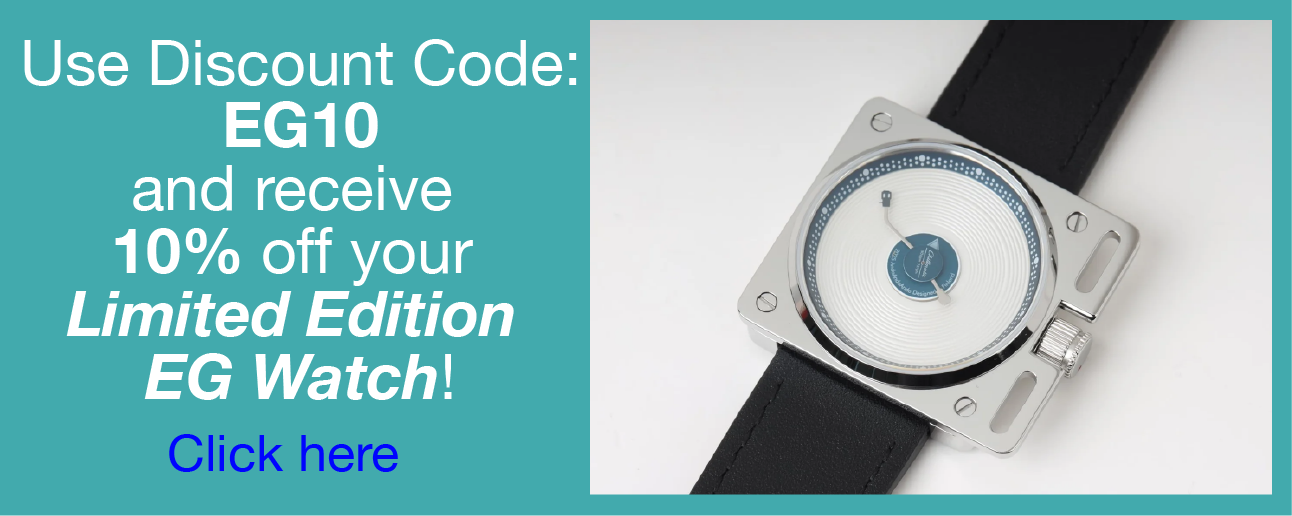The Esteemed Gentleman Articles
How To Stir Your Tea (And Coffee) Like Royalty
For some people, the ritual of brewing or steeping the perfect cup of coffee or tea is an art-form. They spend hours dialing in the perfect grind consistency, have steeping time and temperature down to a science, and own a plethora of gadgets and gizmos to help them achieve barista bliss.
But did you know that there is one technique that you can learn in just a few seconds? It's true. It requires very little effort and it will revolutionize how you drink your tea and coffee forever. Let's begin:
How To Stir Your Tea (And Coffee) Like Royalty
For simplicity's sake and as a visual aid, imagine there is a clock dial just above the rim of your cup or mug. After adding your desired sweeteners, gently submerge the bowl of your spoon into your cup or mug and gently move it back and forth from 12 o'clock to 6 o'clock. This gentle agitation is the most effective and safest way to stir a hot drink.
Etiquette Tip: Do your best to avoid scraping the spoon along the bottom of the cup or mug or clanging it against the walls as you stir. This is considered poor etiquette.
Avoid Stirring In A Circle. Here's Why:
Placing your spoon in your cup or mug then stirring it clockwise or counter-clockwise will displace your drink so aggressively it can easily spill out over the brim. Hot liquid can easily burn you, stain your clothes, and damage anything it comes in contact with.
Stirring also creates a vortex which will force any sugar you added to the center, resulting in undissolved bits that will alter the flavour of your drink and end up in your teeth during the last few sips.
Differences Between Teacups And Coffee Mugs
Teacups and coffee mugs both serve the same general purpose: to hold hot liquids. Although some people may get them mixed up, they do have certain characteristics that set them apart. Here are some of the most obvious ways to tell the difference between a teacup and a coffee mug:
What Is A Teacup?
Teacups are often made from fine china or porcelain. A proper teacup will be smaller in size than your typical coffee mug (usually 4-6 oz.). Teacups are shorter in height, have a wider brim, and a smaller handle. When served, teacups will come with a saucer.
What Is A Coffee Mug?
Since coffee mugs are less formal than teacups, they come in a wide variety of shapes and sizes. They are most commonly made out of thick ceramic (like porcelain and stoneware), but they can also be made out of metal or glass. A normal coffee mug can hold up to 12 oz. but novelty mugs can hold much more.
How Should You Position Your Cup Or Mug?
Visualize the same clock we mentioned at the beginning of this article. If you are placing your teacup or mug on a table (always on a coaster or some sort of protective surface, NEVER on the bare tabletop), the handle of your cup or mug should face the 3 o'clock position if you are right handed and 9 o'clock if you are left handed.
Having the handle situated like this means you do not have to break eye contact with someone mid-conversation if you want to sip your tea or coffee. You can just lower your hand to the handle.
Making this a habit will greatly reduce the chances of you accidentally knocking over your tea or coffee or dipping your fingers in the hot liquid while you blindly grasp for the handle.
How To Hold A Teacup The Correct Way
Holding a teacup is different than holding a coffee mug. Since the handles on teacups are generally smaller, only your index finger may fit through the opening. Hook your index finger through the handle and place your thumb on top of the handle, pinching the handle between your finger and thumb.
If this feels uncomfortable, or if the teacup is heavy, you can place your middle finger under the handle to help support the cup.
If you are sipping tea in Asia, you may notice that traditional teacups do not have handles. You must use both hands to pick up the cup. Doing so creates a more mindful tea drinking experience by incorporating the sense of touch, since you can feel the warmth of the tea in your hands.
How To Hold A Coffee Mug The Correct Way
Smaller coffee mugs will have smaller handles, usually big enough for just one finger. To hold a smaller coffee mug, use the exact same method as holding a teacup with your index finger in the handle, thumb on top, and middle finger supporting the handle.
Larger coffee mugs will have larger handles, big enough for two, three, or even four fingers. This design is to help hold the mug more securely as they are heavier than smaller mugs. To hold these mugs, put as many fingers as you can comfortably fit through the handle and place your thumb over top of the handle to help balance the mug.
The least formal way to hold a coffee mug is known as the 'claw hold', where you wrap your hand around the mug and hold it like you would a soda can. This grip is often reserved for travel mugs, thermoses, and insulated mugs that do not have handles.
What Should You Do With Your Spoon?
Once you are finished stirring, remove the spoon and gently shake it just above your drink to remove any liquid that may be on it. Ensure the liquid lands back where it came from and not on the table. If a drop lands elsewhere, wipe it up immediately.
Avoid tapping the spoon against the brim of your drinkware. Not only does this create a loud, unpleasant noise that will draw attention to you, but it could also damage delicate teacups or mugs made from thin materials.
Use A Saucer (If Provided)
When tea is served it will often come with a decorative saucer. This saucer serves many purposes including providing a protective barrier between the hot teacup and the surface the saucer is resting on, catching any drips from the teacup, a place to put a small snack, and where you should rest your spoon.
Once you have finished stirring your tea, remove the spoon, gently shake off any drips, and rest it on the saucer face down behind the teacup. Proper etiquette says to rest the spoon horizontally on the saucer and far enough back that it will not interfere with your teacup.
If You Do Not Have A Saucer, Use Any Of The Following
If you order a cup of tea at a casual restaurant or coffee shop, you may not receive a saucer with it. If this happens to you, place your spoon face down on a napkin, coaster, or plate. It isn't ideal, but it works in a pinch.
Never put your spoon directly on the table, regardless of whether it is clean or dirty. This is disrespectful to those who have to clean the tables and ready them for the next customer.
How To Hold A Saucer
Hold the saucer in your non-dominant hand. Place your thumb on the top of the saucer and gently stretch your fingers under it to help balance it and prevent spilling. When taking sips of tea, keep the saucer stationary. Only the cup should be raised up to your mouth.
Keep the saucer held around the same height as your abdomen so it is within peripheral view. This will reduce the chances of someone accidentally bumping it or knocking it out of your hands as they walk by.
Summary
Want more etiquette tips? Read the following articles:
When you subscribe to the article, we will send you an e-mail when there are new updates on the site so you wouldn't miss them.











Comments